
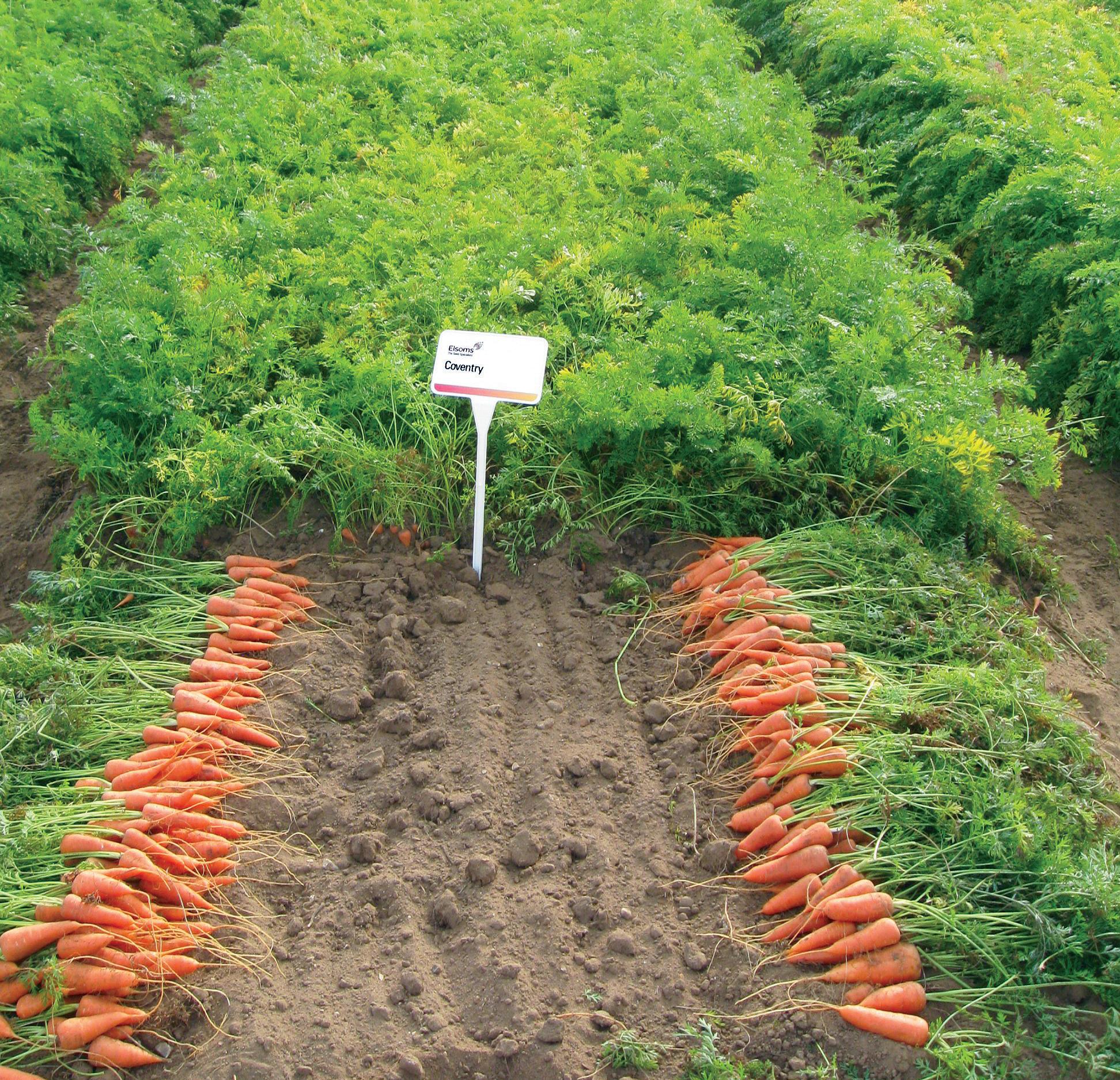

Vol. 33, No. 4




Vol. 33, No. 4
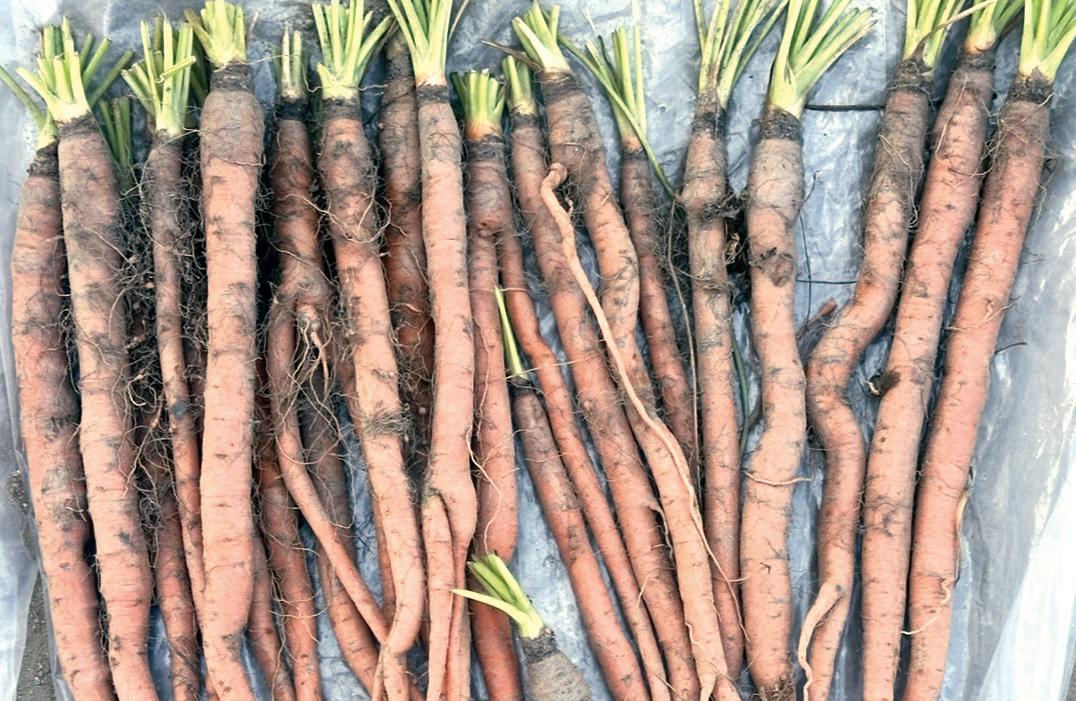
The British Carrot Growers Association’s annual Field Demonstration Day set the stage for the second annual British Carrot Day. Read about both events on page 6. Photo by John Stolarczyk, World Carrot Museum
Telephone: (208) 520-6461
Circulation: (503) 724-3581
CARROt COUNtRY CONtACts
editor
Denise Keller editor@ColumbiaMediaGroup.com
Publisher / Advertising Manager
Dave Alexander dave@ColumbiaMediaGroup.com
director of Operations
Brian Feist brian@ColumbiaMediaGroup.com
editORiAL iNFORMAtiON
Carrot Country is interested in newsworthy material related to carrot production and marketing. Contributions from all segments of the industry are welcome. Submit news releases, new product submissions, stories and photos via email to: editor@ColumbiaMediaGroup.com.
AdVeRtisiNG sALes
For information on rates, mechanics, deadlines, list rental, direct mail, inserts or other information, call (208) 520-6461 or email: dave@carrotcountry.net
sUBsCRiPtiONs
U.S. $20 per year
Canada $30 per year
Foreign $45 per year
subscribe online at: www.CarrotCountry.com/subscribe or call (503) 724-3581
Email address changes/corrections to brian@ColumbiaMediaGroup.com or mail to:
Carrot Country PO Box 333 Roberts, ID 83444
Carrot Country magazine (ISSN 1071-6653), is published four times a year and mailed under a standard rate mailing permit at Idaho Falls, Idaho and at additional mailing offices.
Produced by Columbia Media Group PO Box 333, Roberts, id, 83444
Copyright 2025. All rights reserved. No part of this publication may be reproduced or transmitted in any form or by any means, electronic or mechanical, for any purpose without the express written permission of Columbia Media Group.


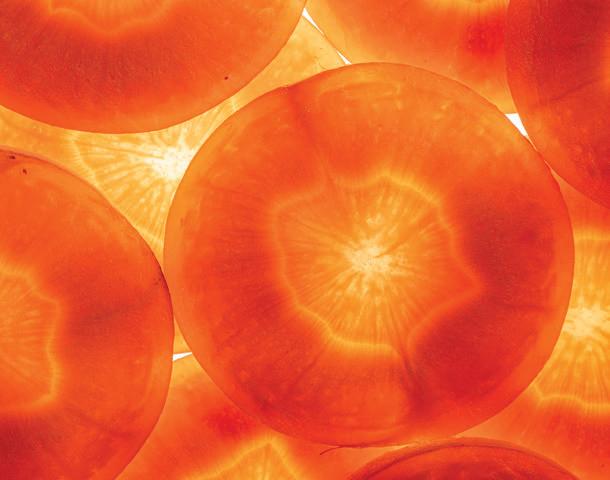
Two consistent varieties that perform across seasons and markets
JERADA RZ
• Early Nantes hybrid with smooth skin
• Early high yielding variety
• High uniformity in roots
• Strong, mid-dark green and upright foliage
• Excellent for bunching and fresh markets
YMER RZ
• Berlicum/Nantes hybrid
• Cylindrical shape and smooth skin
• High uniformity in length and diameter
• Intense orange color and strong green foliage
• Good for fresh market and long-term cold storage
By Umbrin Ilyas and Mary Ruth McDonald, University of Guelph
Evaluating certain characteristics of soil may help predict the risk of cavity spot in carrots and, in turn, allow growers to make decisions to manage the risk, according to recent research at the University of Guelph in Ontario, Canada.
Cavity spot is a soil-borne disease of carrots that occurs in many carrot-growing regions around the world. The disease causes shallow, sunken and horizontally shaped lesions on carrot roots (Fig. 1). These symptoms lead to economic losses for growers. The disease usually starts to appear when carrot roots start to expand (mid-August in the Northeast), and lesions increase in size until harvest. No symptoms are visible above ground. Carrots must be pulled and sometimes washed before the symptoms are apparent (Fig. 2).
Cavity spot has been reported from most commercial fields growing carrots on high organic matter soil in the Holland Marsh, Ontario, Canada. The Holland Marsh is the largest carrot-producing region in Ontario, accounting for 62% of the province’s fresh market carrot production.
Cavity spot is an unusual disease because it is caused by several species of the “water molds” Pythium and Globisporangium that naturally occur in the soil. The disease tends to be more severe in seasons with higher total rainfall or heavy irrigation, especially when there is increased rainfall in the two or three months before harvest (August and September in the Northeast).
No commercial carrot cultivars are fully resistant to cavity spot. Management
high-risk soils.
Soil properties

options are limited and include using raised beds to reduce soil moisture, rotating crops for three to six years and applying one of the three fungicides currently registered in Ontario. Despite these efforts, cavity spot continues to appear in commercial fields in the Holland Marsh.
A recent study focused on developing a soil test to assess the risk of cavity spot in a field before seeding. This would allow growers to make informed decisions such as avoiding high-risk fields or choosing less susceptible cultivars if available.
Soil samples were collected just before seeding from 22 commercial carrot fields in the Holland Marsh. Fields with a known history of cavity spot were selected in collaboration with the local integrated pest management team using field data from 2015 to 2019. All selected fields were located within a 20-km radius, had muck soil with 35–80% organic matter, followed an onion–carrot rotation and used similar agronomic practices. Each field was seeded with orange carrot cultivars.
In each field, four sites measuring 10 x 10 meters (11 x 11 yards) were selected and marked using GPS. These sites were spaced 50 to 100 meters apart. At each site, approximately 10 soil cores were collected in a W-pattern using a soil sampler to a depth of 20 cm (Fig. 3). Samples were sent to laboratories for soil nutrient analysis and microbial identification.
In early October, carrots were harvested from the same GPS-marked sites to assess cavity spot severity. Fields with disease severity between 5% and 10% were classified as low-risk, while fields with severity between 15% and 45% were considered high-risk.
The study identified several differences in soil properties and microbial communities between low-risk and highrisk fields for cavity spot. Low-risk soils had higher calcium base saturation (CaBS) at 81.5%, higher cation exchange capacity (CEC) at 48.5 meq/100g and a pH of 6.6. In contrast, high-risk soils had higher levels of copper (Cu) at 12.6 ppm and iron (Fe) at 209.6 ppm and lower pH (~6) (Table 1).
Microbial analysis also showed differences between risk categories. Low-risk soils had greater abundance of some kinds of fungi such as Mortierella, Emericellopsis and some bacteria such as Rubellimicrobium. High-risk soils had higher populations of known pathogens including Globisporangium, Pythium and some kinds of fungi such as Fusarium, Fusicolla, Mrakia, Penicillium and bacteria like Bradyrhizobium and Staphylococcus
These results suggest that the risk of cavity spot can be assessed before seeding carrots based on specific soil chemical characteristics and microbial taxa. In the Holland Marsh, carrot growers using an onion–carrot rotation are advised to consider a field high-risk for cavity spot if soil copper is ≥ 12 ppm and iron is ≥ 210 ppm. Fields are more likely to be low-risk when soil pH is ≥ 6.6 and calcium base saturation is ≥ 80%.
Further validation is needed to confirm these indicators. This work was done only on high organic matter soils, and it is not known if the same factors will be important on mineral soils. Expanding research to other regions and soil types will help determine whether these predictors are broadly applicable for managing cavity spot risk. We are sampling more carrots field this year, and the research is continuing.
Details of the trials can also be found on the research station website at bradford-crops.uoguelph.ca.

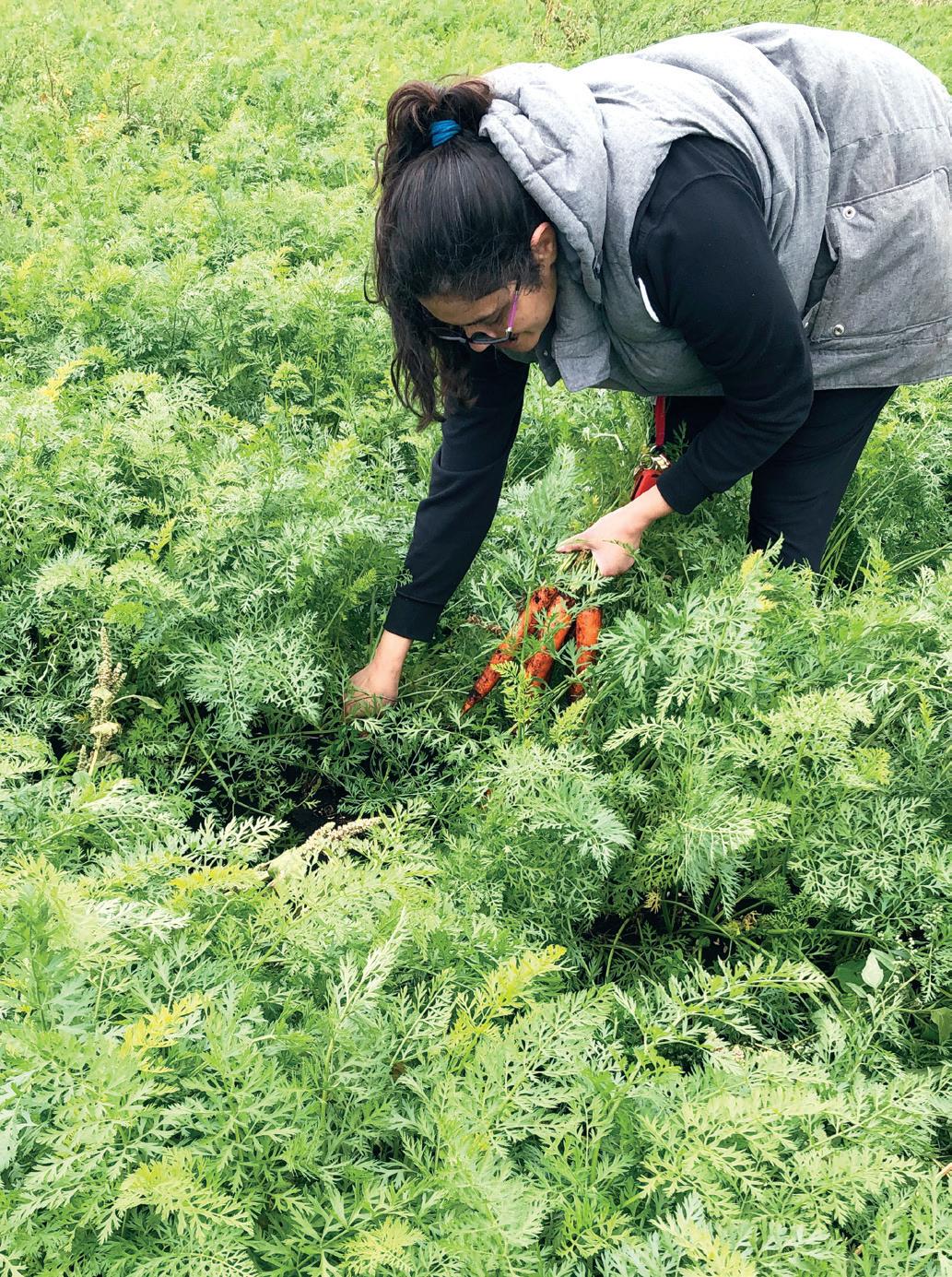
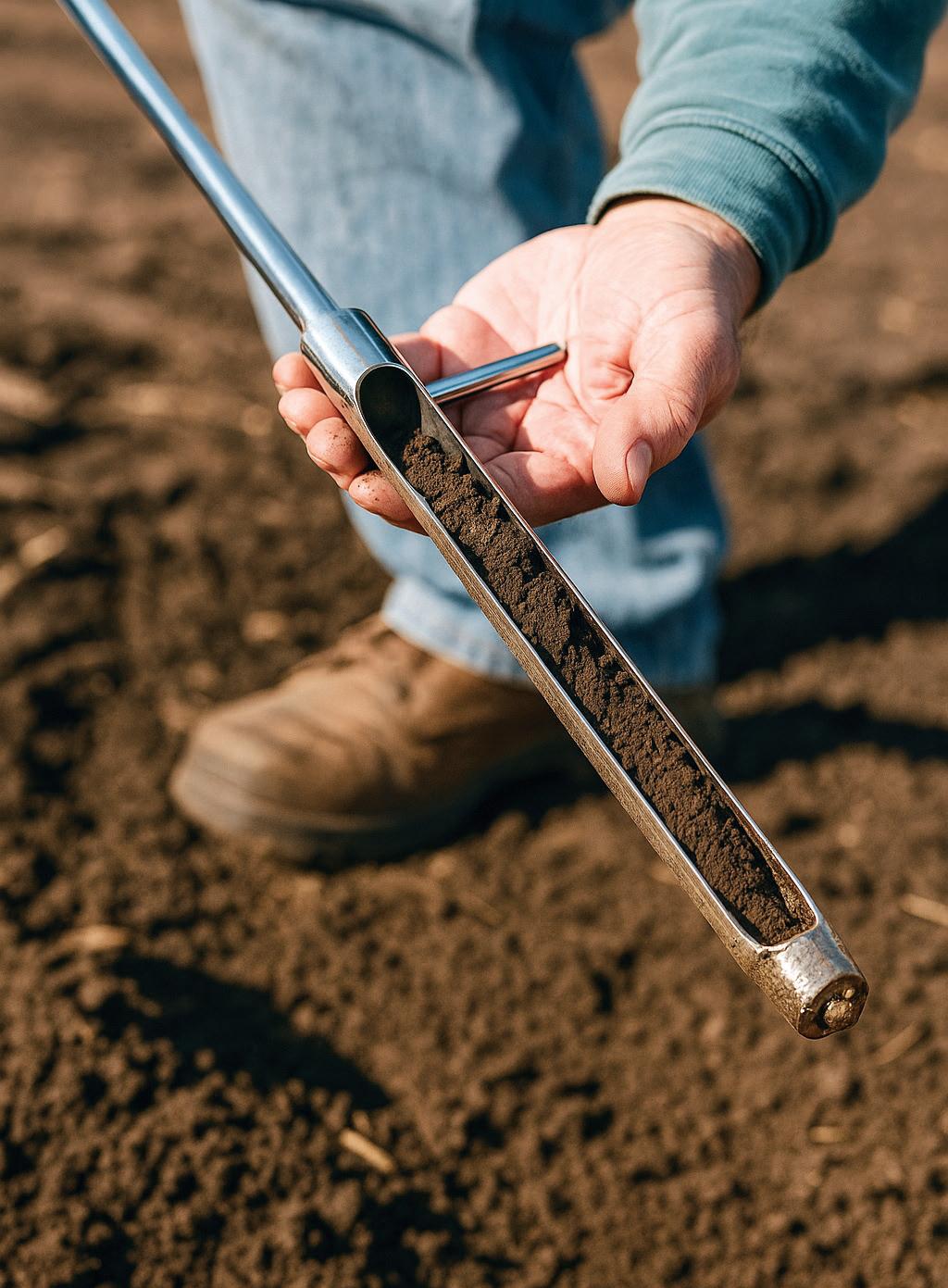
Story and photos by John Stolarczyk, World Carrot Museum
Carrots were front and center in the UK this fall as the British Carrot Growers Association (BCGA) held its annual Field Demonstration Day on Oct. 2 followed by the second annual British Carrot Day on Oct. 3.
The demonstration day is designed to provide an opportunity for growers, agronomists and industry professionals to view and compare 85 carrot plots, examining carrot varieties for characteristics ranging from root color, shape and length to potential yields and disease resistance. The trial featured both well-established and new varieties, offering carrot growers insight into variety performance and the latest technology advances and crop innovations. It also
gave farmers an idea of how varieties will perform in different conditions, locations and soil types and under different growing regimes and watering schedules.
The event also featured an indoor exhibition area with 30 companies showcasing agri-tech innovations and machinery including optical color sorters, laser weeders, autonomous farming robots and precision seed drills. In the fields, six seed companies provided examples of their produce: BASFNunhems, Bayer, Elsoms, Enza Zaden, Hazera/HM Clause and Wing Seeds.
“It’s also a great opportunity to showcase Ambyance, our newest carrot variety – a versatile, high-yielding Nantes type designed to meet tomorrow’s needs,” said Naz Ahmed, customer marketing and value chain manager at BASF-Nunhems.
“We’ll also be presenting our latest crop protection innovations, including a new virus management solution and a Revysolbased fungicide.”
The demonstration day led directly into British Carrot Day the next day, which returned for its second year following a successful 2024 launch. The campaign continues a national push to raise awareness of the carrot’s nutritional value and importance to British agriculture. It also highlights challenges faced by growers, such as low returns on a highrisk crop, and the need to boost carrot consumption across UK households.
“The campaign is about telling the farm story behind a low-cost staple. Because they’re relatively cheap, people


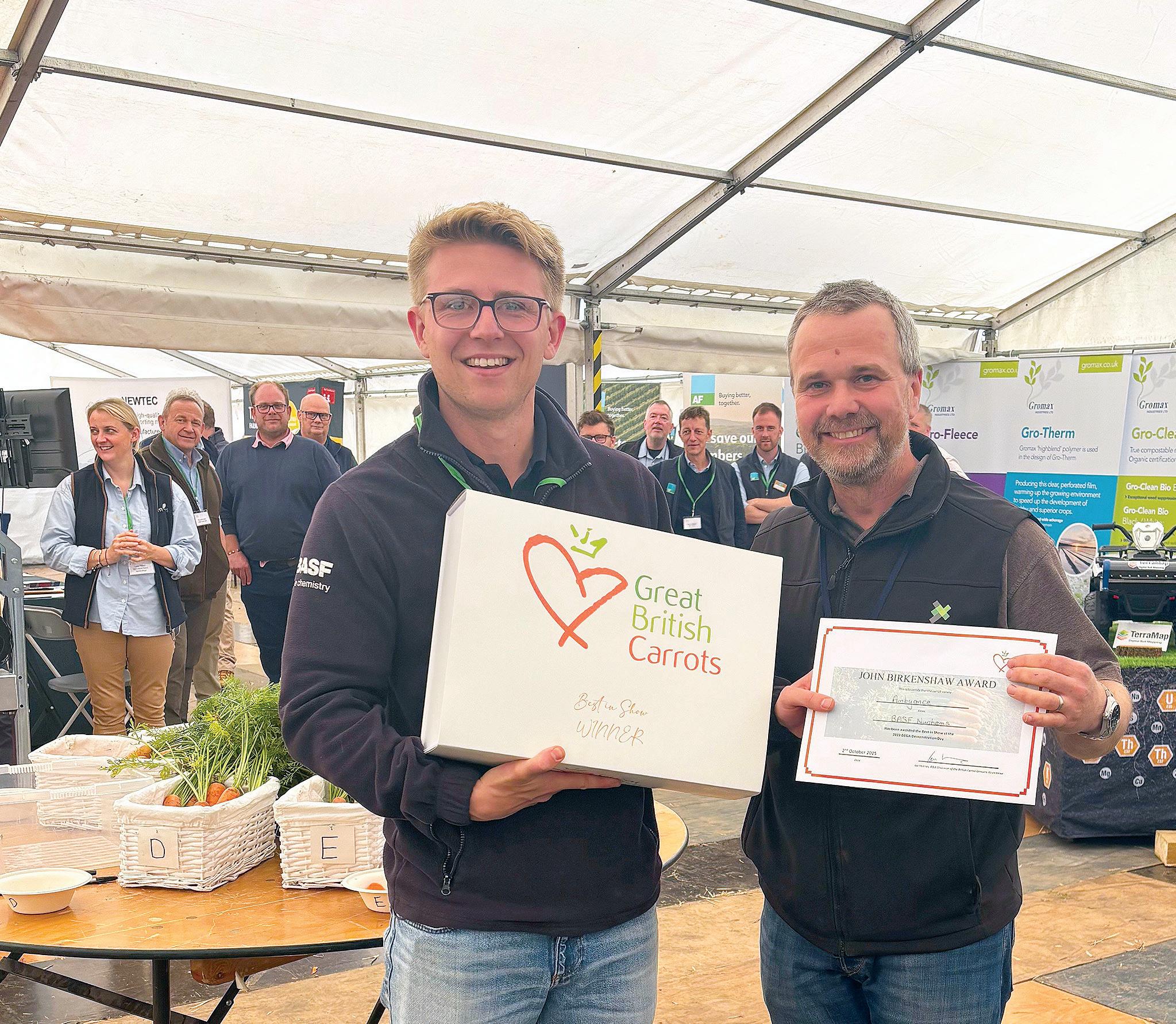
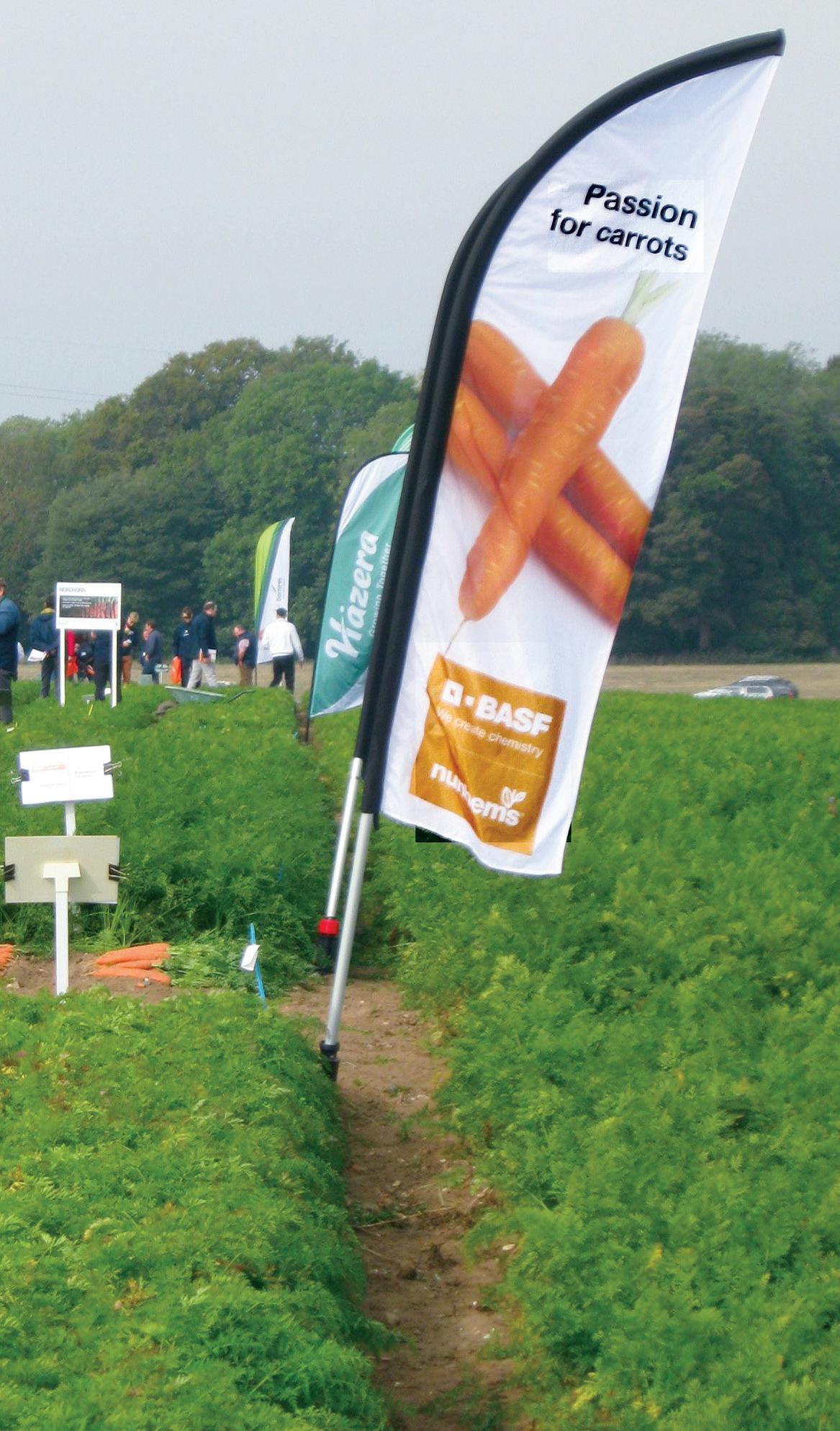

don’t realize how difficult carrots can be to grow,” said BCGA chairman Rodger Hobson, an eighth-generation carrot grower. “If British Carrot Day persuades shoppers to pick up an extra bag and try a new recipe, the effort will be worthwhile.”
Simply put, this is the day British carrot growers take the opportunity to celebrate all things carrot. Participants were encouraged to share their favorite carrot dishes on social media using the hashtag #TheLoveOfCarrots.
Nutritionist Laura Wyness, from Scotland, helped promote the farmerled campaign, saying that carrots are “one of our nation’s most versatile yet
underappreciated foods.” Wyness, who has two decades of experience in public health nutrition, said everyday staples risk being overlooked.
“When a food falls into the category of ‘common staple,’ there’s a real risk its nutritional value is forgotten,” she said. “Going back to basics, it’s important to ‘eat the rainbow,’ and this is where carrots come into their own. They are hugely nutritious in their own right, and their color can make other healthy foods more appealing.”
Wyness highlighted the fact that betacarotene, the pigment that gives carrots their bright color, is converted by the body
into vitamin A.
“Our bodies convert beta-carotene into retinol, which is the active form of Vitamin A that helps support eye and skin health and our immune system. Carrots also have beneficial fiber, something 96% of adults in the UK don’t eat enough of,” Wyness said.
Carrots are worth roughly the equivalent of $386.5 million to the UK economy, yet are one of the cheapest vegetables available, selling for approximately 8 cents per carrot in stores in the UK. Each year, 22 billion carrot seeds are sown in Britain, producing over 700,000 tonnes of carrots.

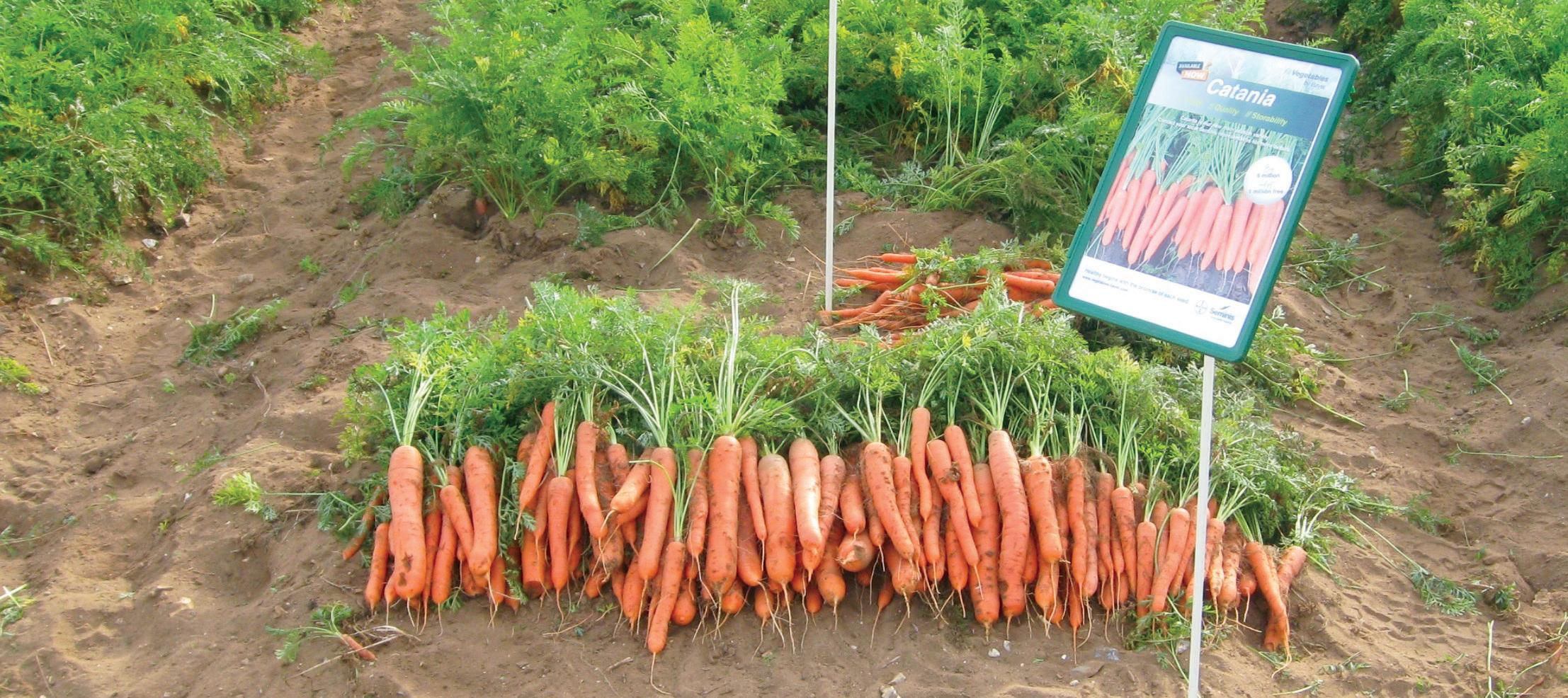
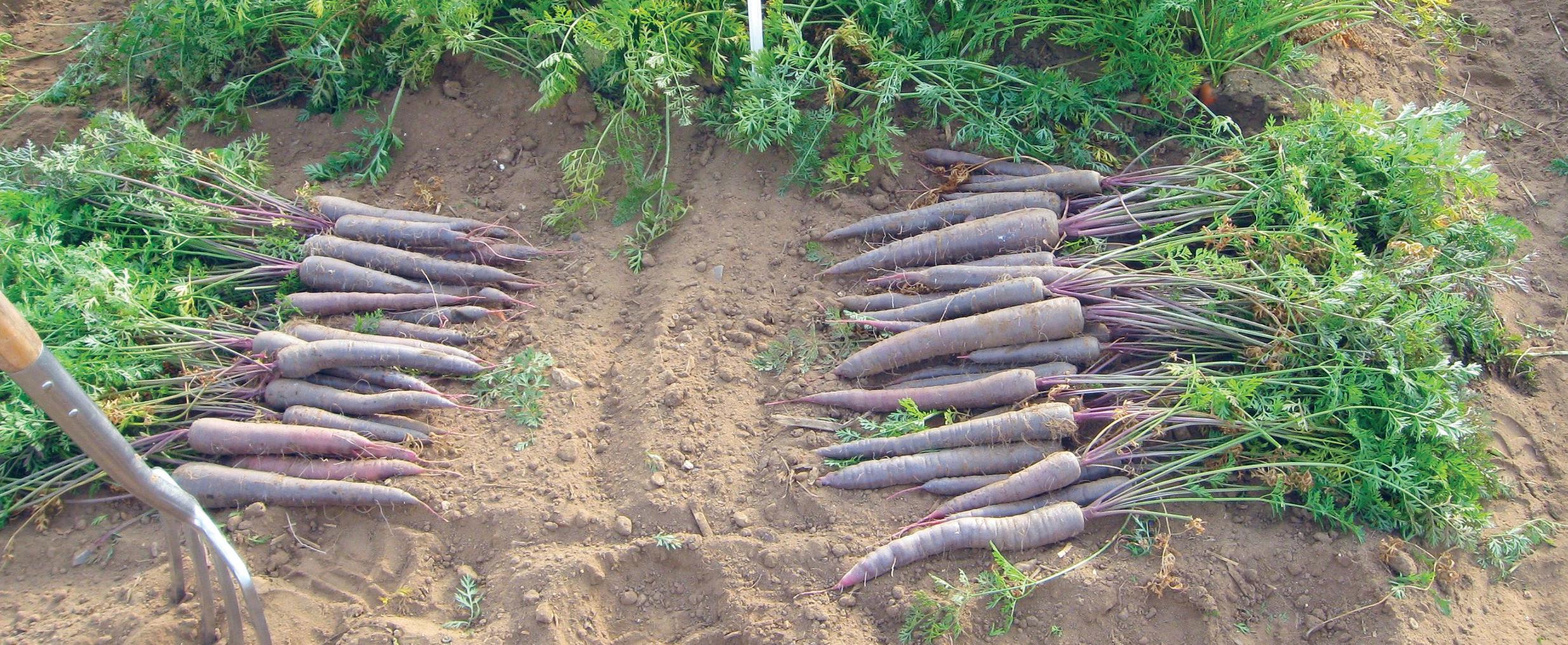





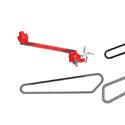


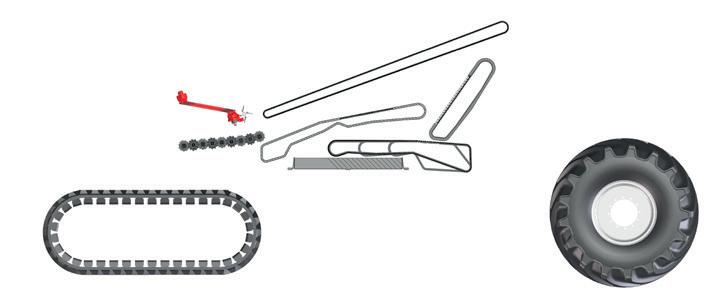
www.dewulfgroup.com



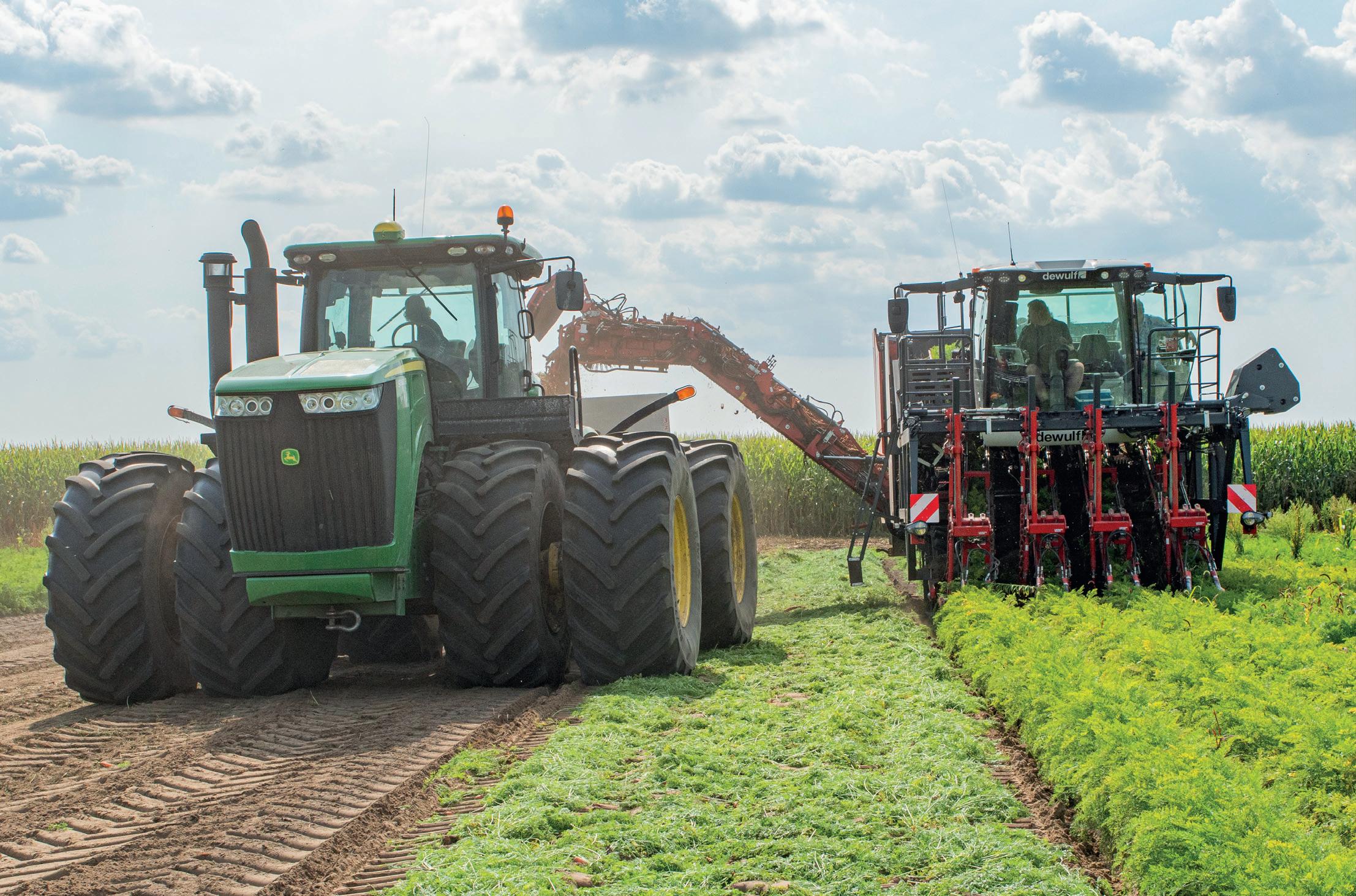


1200 Anderson Corner Rd. Parma, ID 83660 (800) 733-9505
www.nunhemsusa.com paul.bender@basf.com
KingCut, a new variety from BASF/ Nunhems, is a highly adaptable slender carrot for cut-and-peel processing. This variety boasts a high percentage of cuts measuring 0-7/8 inch, ensuring optimal processing efficiency. Its foliar resistance and vigor make it an excellent option for both organic and conventional production. With durable roots that are less prone to cracking and good resistance to Alternaria dauci and powdery mildew, KingCut offers quality and high yield potential for growers.
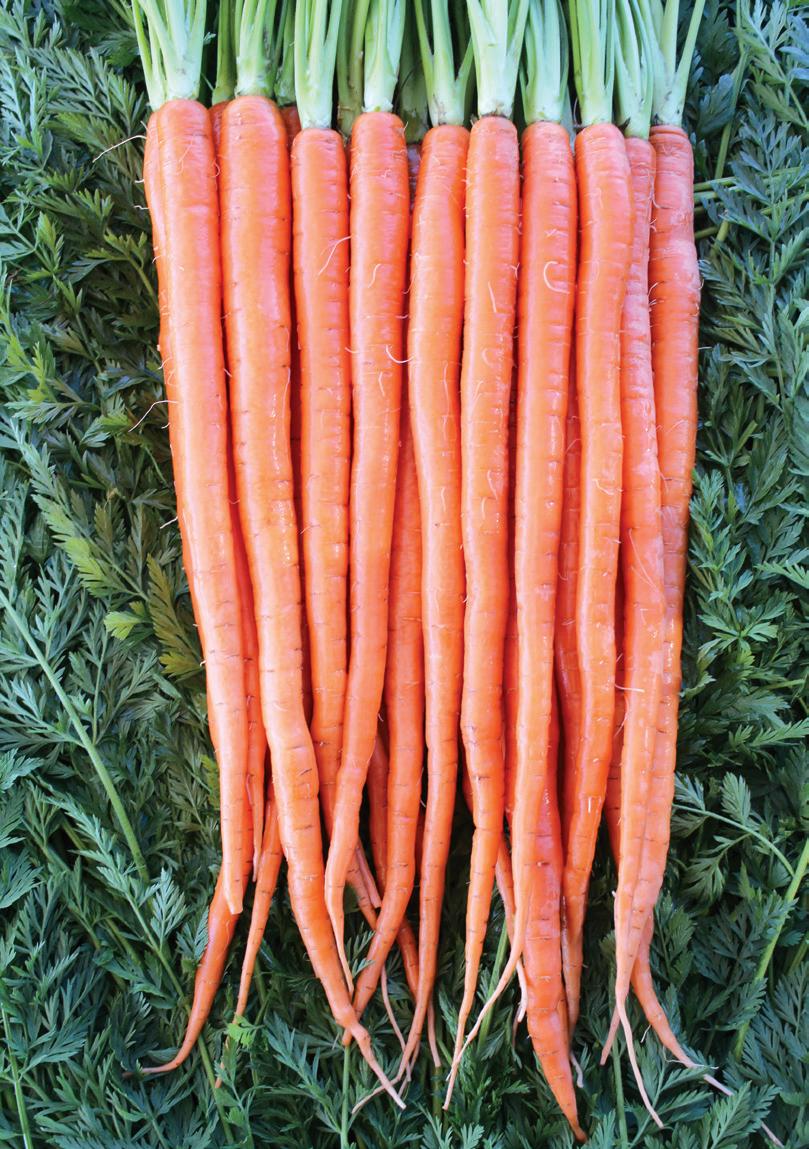

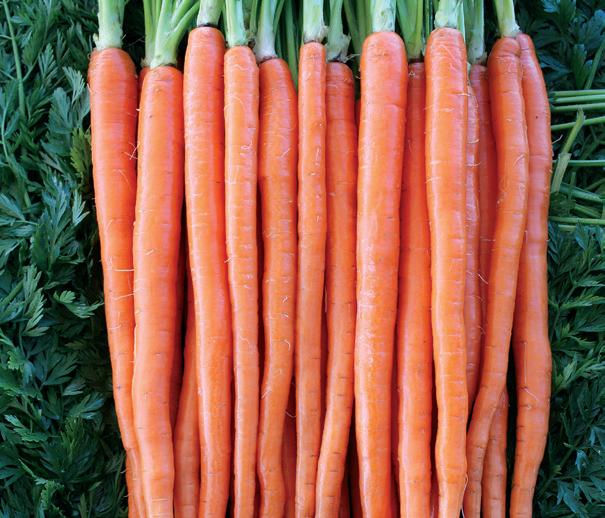
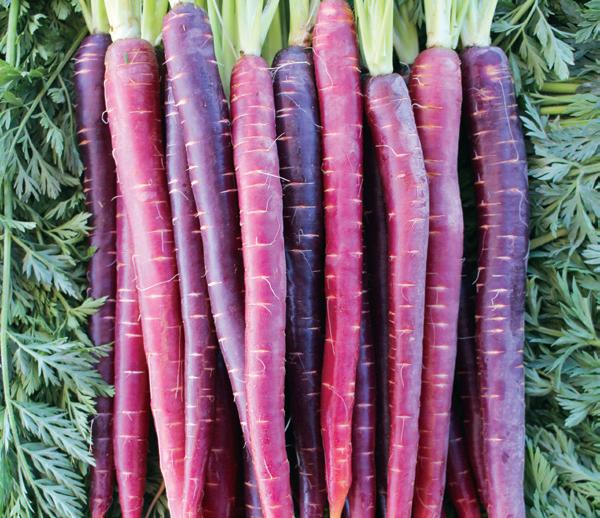
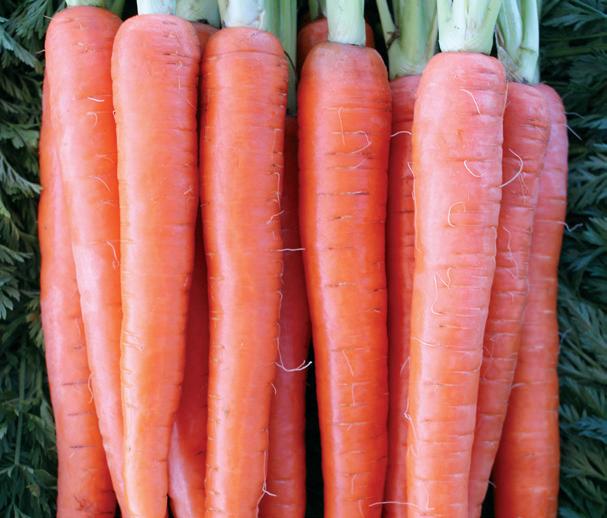
A market standard for fresh whole carrots, Maverick offers exceptional adaptability and consistency with slightly tapered, long roots with good fill. The variety is normal maturing with a high percentage of cellos; root quality makes the product useful for other applications. The variety is popular for commercial organic production and produces consistent, excellent flavor, smooth skin and very good interior color.
ReadyCut is an excellent option for cutand-peel processing. With a uniform, long, slender root shape for cuts of all diameter profiles, this variety features a high percentage of premium pieces under 5/8-inch diameter. Carrots have good flavor, crunchy texture and durable roots for a lower percentage of cracking and breaking.
PurpleSummer offers a purple exterior complemented by a small yellow-orange core. This carrot offers a crisp texture and exceptional eating quality. With improvements in bolting during the spring and summer harvest windows, this variety ensures a reliable yield potential. Its dual purpose nature makes it ideal for fresh market, bunching and processing, providing versatility for growers.
TrophyPak is an early-maturing and vigorous cello/jumbo hybrid with exceptional adaptability and consistency. The variety produces a high percentage of cellos while also flexible for use in making jumbos. Carrots feature vigorous and upright foliage, high tolerance to Alternaria dauci and powdery mildew, and tapered roots with excellent tip fill.
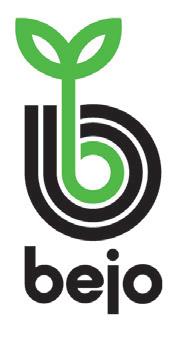
1972 Silver Spur Place Oceano, CA 93445 (805) 473-2199 bejoseeds.com info@bejoseeds.com
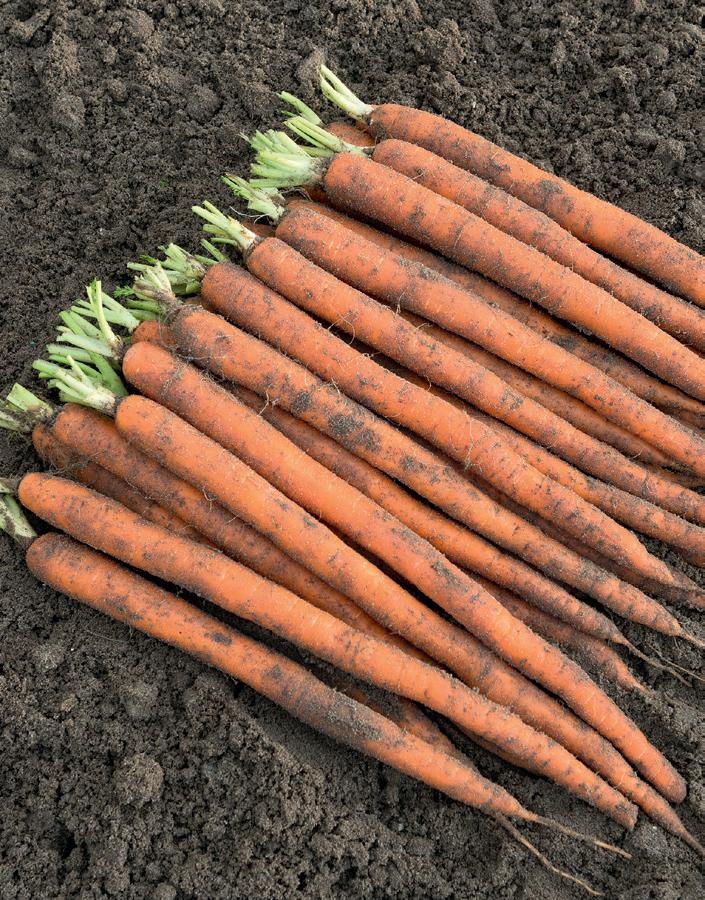



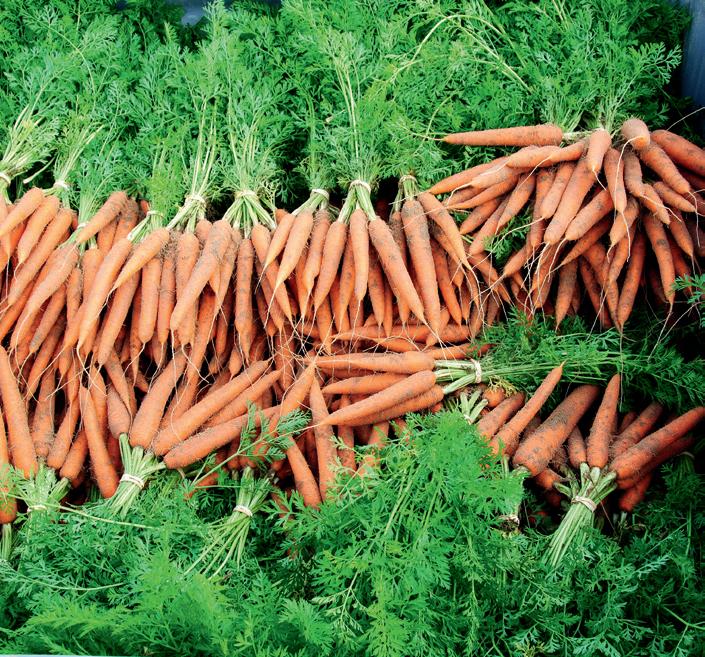
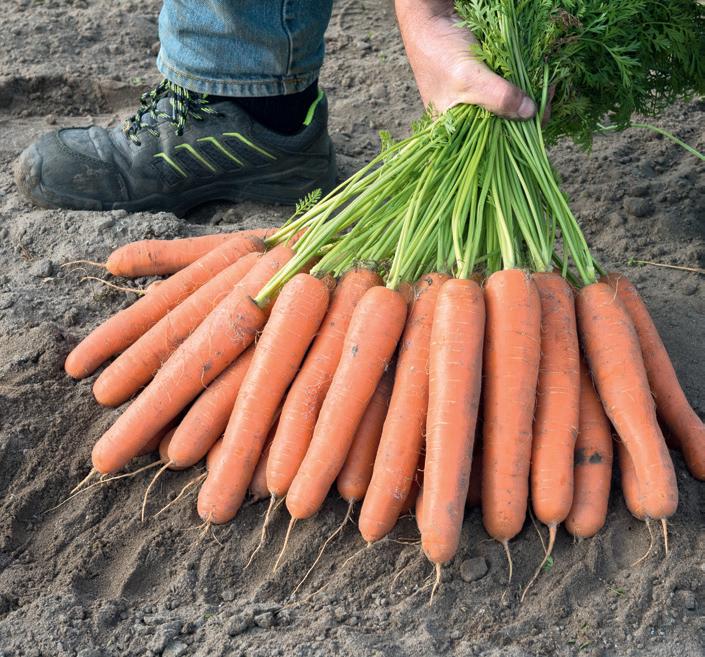
Pismo is a high-yielding, heavier variety that is very uniform with good tops and 12- to 13-inch smooth roots. This growerfriendly variety for the cut-and-peel industry has intermediate resistance to Cercospora leaf blight.
A good-yielding carrot that is well suited for the cut-and-peel industry, this variety is adaptable to different areas with decent tops and uniformity in shape. Roots are 12 to 13 inches and are fairly smooth. This harvest-friendly variety has intermediate resistance to black rot and Cercospora leaf blight.
Junction is a widely accepted variety with slightly tapered roots, a dark orange color and no green shoulder. It has intermediate resistance to Alternaria leaf blight, black rot, Cercospora leaf blight and cavity spot.
Naval is a continental Nantes type that can be used for bunching and fresh market sales, as well as long-term storage. The variety has strong tops and excellent flavor. Roots are crack resistant and very uniform. This grower favorite has intermediate resistance to Alternaria leaf blight, black rot and Cercospora leaf blight.
Narvik is an easy growing mid-early Nantes with nice flavor and texture. The roots are uniform and cylindrical, and tops are strong, healthy and erect. Overall, Narvik holds well in storage and is adaptable to standard or high-density spacing. It has intermediate resistance to black rot, Cercospora leaf blight and cavity spot.
Yellow Moon has a clear, bright yellow root with reduced green shoulder. Roots are 7 to 8 inches long and have strong tops for hand or mechanical harvest. The variety has intermediate resistance to Alternaria leaf blight, black rot, Cercospora leaf blight and cavity spot.

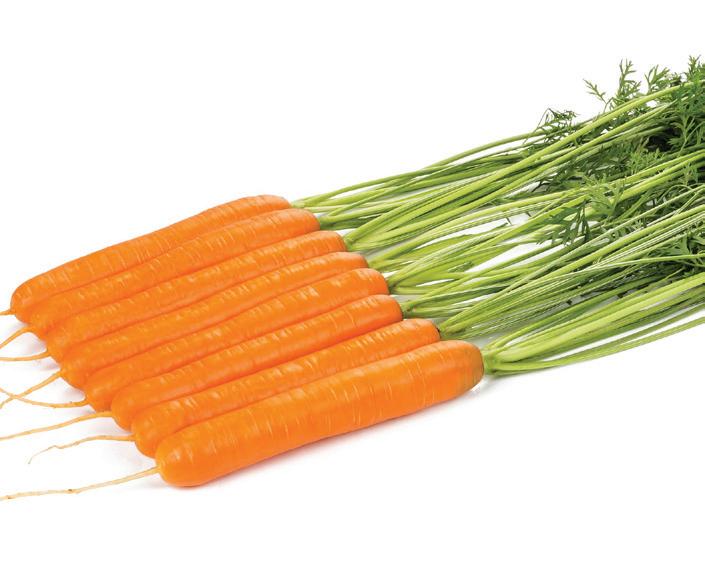
Set to become commercial soon, Ellis is a Nantes-type hybrid for fresh market and suitable for long storage. This variety needs 120-140 growing days for full blunt length. The variety is strong against breakage and splitting and has strong foliage for mechanical harvest, stress and disease pressure. High carotene and Brix value are maintained through storage.
Set to become commercial soon, Hestan is a Nantes-type hybrid for fresh market and suitable for long storage. The variety takes 130-150 growing days for full blunt length. Strong against breakage and splitting, this variety is a very uniform and good yielder with strong foliage for mechanical harvest, stress and disease pressure. High carotene and Brix value are maintained through storage.

701A LaGuardia St. Salinas, CA 93905 (831) 455-3000
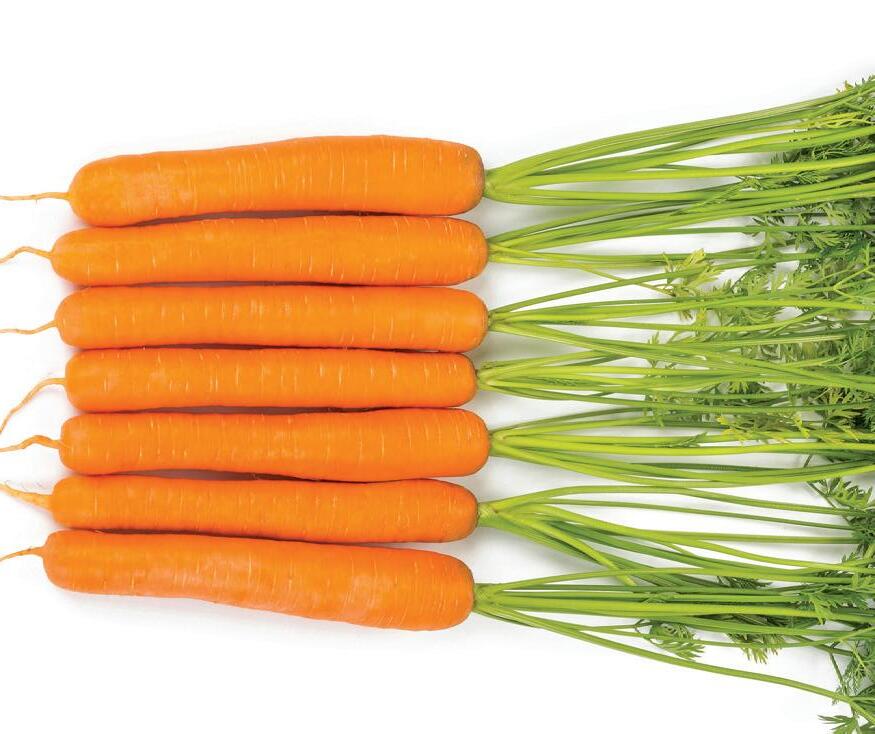
New in 2021, Ymer is a Berlicum/Nantes-type hybrid for fresh market and suitable for long storage. Reaching maturity in 130 growing days, the variety features strong, dark green foliage, and a nice cylindrical shape, growing to 8 inches. High carotene and Brix value are maintained through storage.


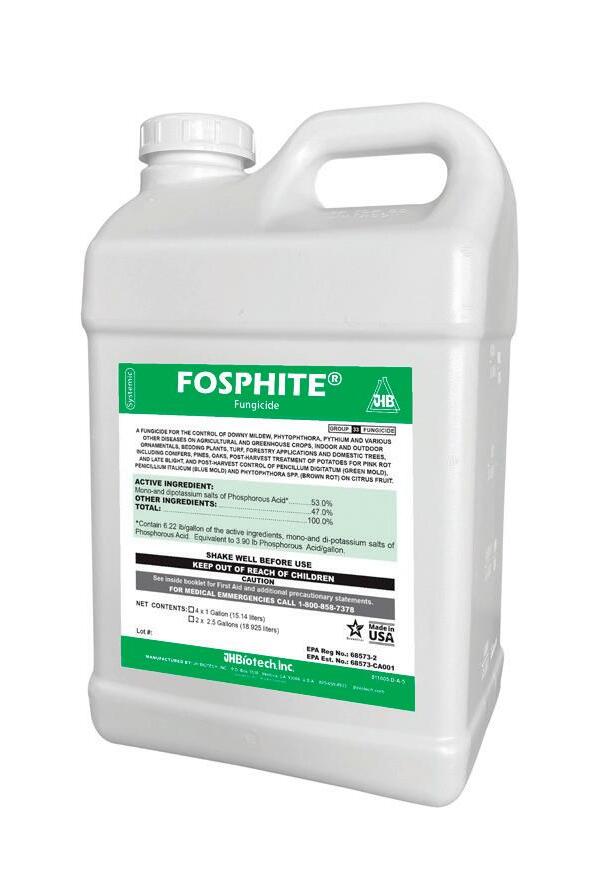



Mainstay Calcium 2.0, a biostimulant product from Redox Bio-Nutrients, recently received the Certified Biostimulant label from The Fertilizer Institute. This indicates that the product meets industry recognized standards for efficacy, safety and composition.
The certification label provides benefits to manufacturers, ag retailers and growers, according to Redox president Colton Moon.
“Ag retailers can assess products more confidently for shelf space, and it provides growers with confidence in product compliance with an industry program and allows them to make an informed decision about which product is right for them and their needs,” Moon said.
Vive Crop Protection has hired Bryce Eger as executive advisor, Canada commercial development. Eger brings more than 30 years of experience in agriculture, with a career at companies including Cargill, Pioneer Hi-Bred International, Corteva Agriscience and Crop Life Canada.
Vive credits Eger with having an ability to drive innovative growth, foster transparency and cultivate talent within expanding teams. In his new role with Vive, Eger will support the company’s continued expansion in the Canadian ag market.

Tessenderlo Kerley Inc. has acquired Eastman’s U.S. and Canadian crop protection metam sodium (CLRTM 42%) and metam potassium (KLRTM 54%) product labels. The acquisition creates a stronger, more accessible product line designed to help growers protect their crops, improve soil health and maximize yield potential, according to Tessenderlo Kerley. The company says its distribution network and field support teams will ensure U.S. and Canadian growers have timely access to metam products and expert guidance on application best practices. Tessenderlo Kerley also plans to launch updated stewardship and training programs focused on safe handling, regulatory compliance and integrated pest management.
BioSafe Systems has expanded its product portfolio with the addition of BioPhyter, a biostimulant. BioPhyter utilizes a plant-derived strain of the fungus Beauveria bassiana to colonize the plant systemically, from root to leaf, improving key physiological functions within the plant. This systemic activity can strengthen the vascular system, maximizing nutrient distribution, photosynthesis and structural integrity. As a result, plants are better equipped to withstand both abiotic and biotic stressors, promoting healthier, more resilient growth, according to BioSafe.
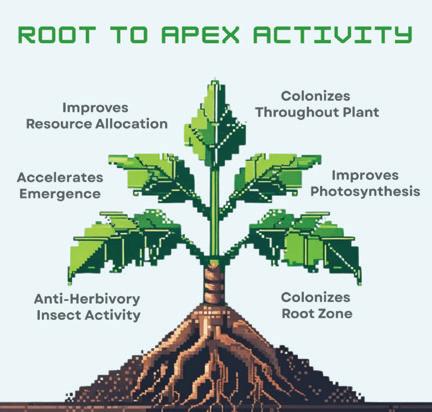
Visit www.biosafesystems.com.
Ecorobotix has some new applications for its ARA Ultra High Precision Sprayer available for use in carrot production. The company has launched its volunteer potato algorithm in carrots. The sprayer uses this algorithm to detect and treat unwanted volunteer potato plants growing within carrot crops, offering carrot growers a technology that can replace manual weeding and reduce input use. In addition, Ecorobotix’s Plant-by-Plant artificial intelligence (AI) no longer only distinguishes between crops and weeds, but also identifies classes such as monocots and dicots within crops. This advanced distinction is now available for select crops including carrots. Visit www.ecorobotix.com.

Story and photos by Kevser Ozel, University of Wisconsin
This year’s University of CaliforniaRiverside – USDA-ARS Nematode Trial Carrot Field Day was held on Aug. 26 in a M. incognita-infested field at the University of California-Riverside Coachella Valley Agricultural Research Station, where 360 entries were evaluated for resistance. Entries included inbreds, hybrids, mapping populations from the UCR-USDA Carrot Breeding Program and anonymous genotypes from the seed industry.
Carrot community representatives from non-profit agencies, the seed industry, USDA and universities were invited to attend the harvest display, with national and international carrot researchers in attendance. This included a group of nematology faculty and students from the University of California-Riverside.
Despite being challenged by typical high temperatures of over 95 degrees Fahrenheit and high levels of uniformly distributed nematodes throughout the field, as confirmed by nematodesusceptible check plots, several cello, cut-and-peel and novel-colored carrot genotypes, as well as several entries from seed companies, demonstrated substantial nematode resistance, which highlighted the success of the extensive breeding efforts. The recently released nematode-resistant Nbh2306 advanced line displayed complete resistance in all replications across the field.
Genetic characterization studies are also underway by the UC-Riverside –USDA team to determine candidate genes contributing to resistance in different genetic backgrounds. Additionally, new molecular markers are currently being developed and tested to support the carrot community through markerassisted selection.



Nov. 27
British Growers Association
Onion and Carrot Conference Leicester Tigers Conference Centre Leicester, England www.onionandcarrotconference.co.uk
June 2-3, 2026
International Carrot Conference
The Hotel Bakersfield Marriott at the Convention Center Bakersfield, Calif.
Jaspreet Sidhu, jaksidhu@ucanr.edu
dec. 10-12
Great Lakes Fruit, Vegetable and Farm Market Expo
DeVos Place Conference Center Grand Rapids, Mich. www.glexpo.com
Editor’s note: To have your event listed, please email Denise Keller at editor@ columbiamediagroup.com. Please send your information 90 days in advance.
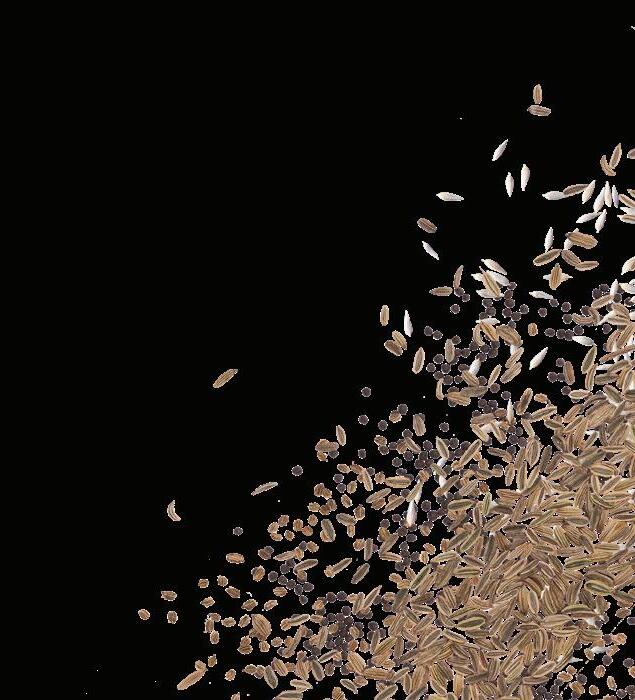
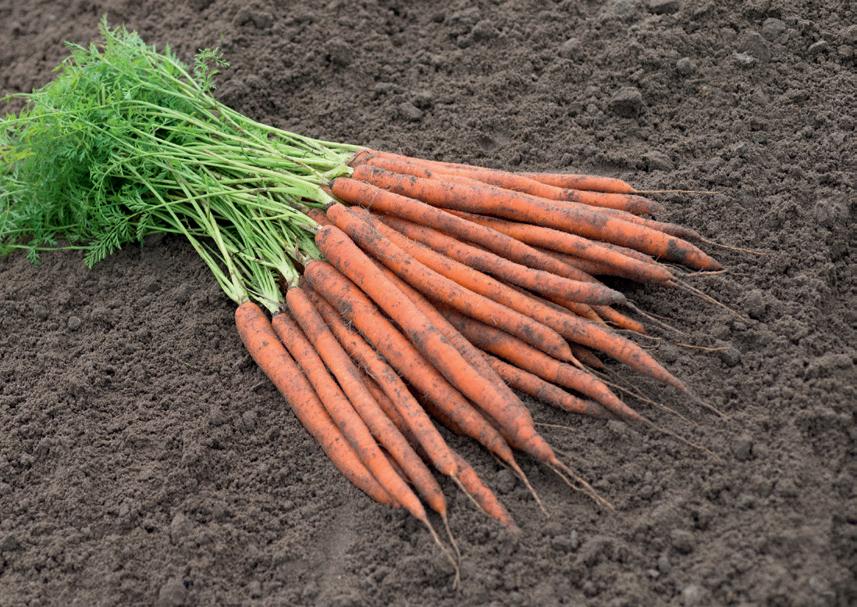
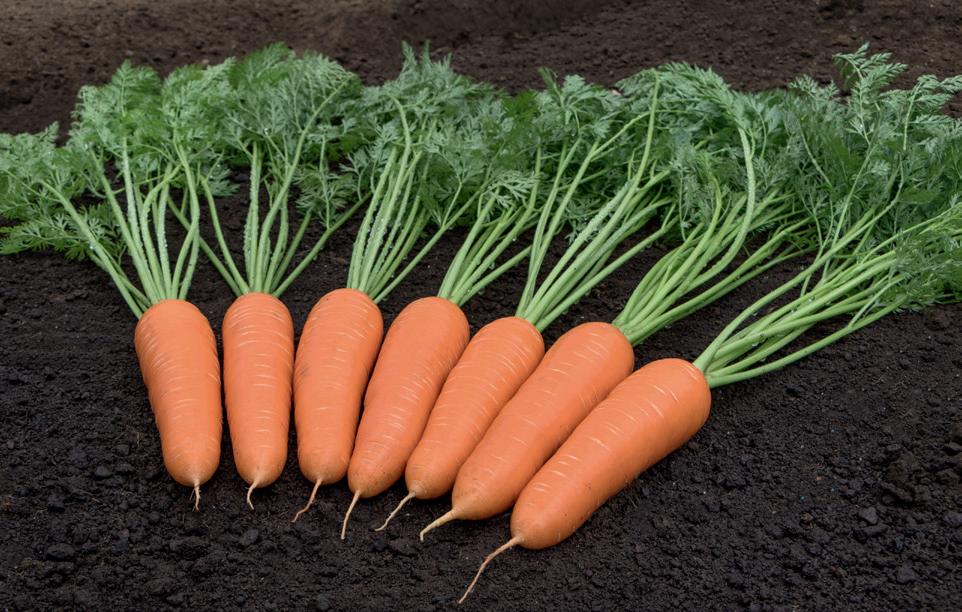
Exploring nature never stops BEJO CARROTS
Great yielding variety, well suited for the cut and peel industry. This variety is adaptable to different regions with decent tops and uniformity in shape. With 12”-13” fairly smooth roots, this is a true harvest friendly variety!
IR: Ar / Cc
Very high yielding uniform variety. Vigorous berlicum with erect, dark green foliage and cylindrical long and strong roots. Produces crack tolerant carrots with an excellent external and internal color. Good storable Berlin type.
IR: Ad / Ar / Cc
f Bejo Seeds Inc. (main office) 1972 Silver Spur Place, Oceano CA f E | info@bejoseeds.com T | 805-473-2199 W | bejoseeds.com
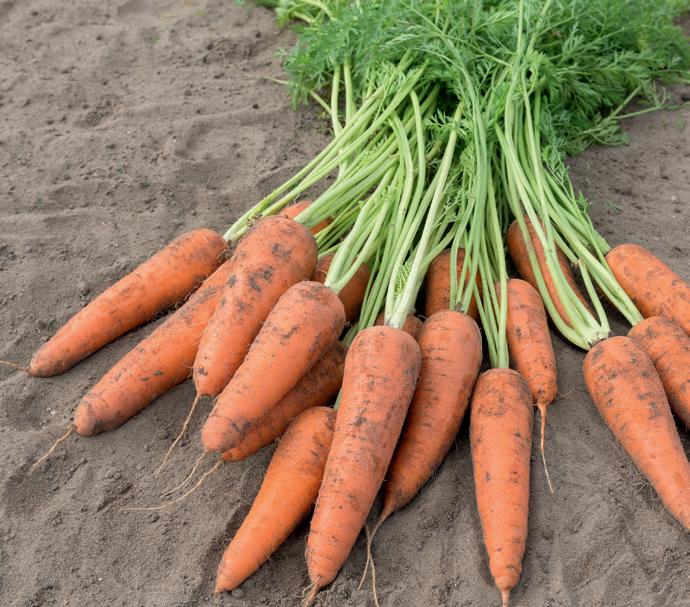
Early Chantenay. A very productive variety with improved tops and long storage. High tonnage potential.
IR: Ad / Ar / Cc
